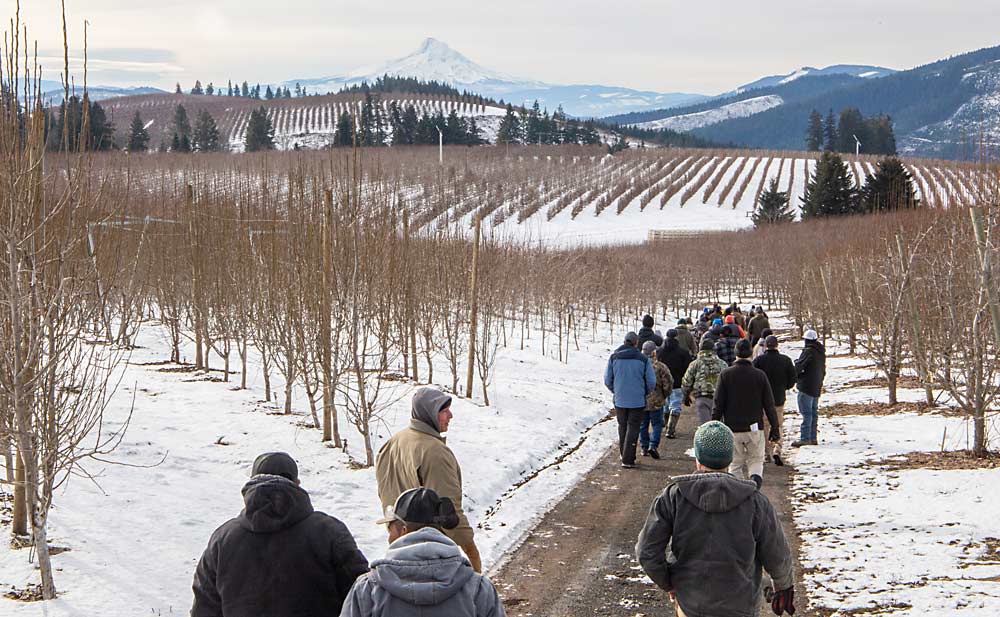
To control planar, high-density pear systems and promote early yields, growers must invest more in hand labor for pruning and training in the first four years.
That’s a tall order for the pear industry, which lacks the array of dwarfing rootstock choices available to apple growers.
But it’s possible, according to Mount Adams Fruit horticulturists.
“Right now, the take-home is it can be done,” said orchard manager Tim Pitz.
Pitz and his fellow supervisors shared their techniques for several dozen growers at a pruning field day in the company’s orchards near White Salmon, Washington. The January 2023 tour covered three pear blocks. Some of them may be featured when Mount Adams holds its 2024 tour on Feb. 1.
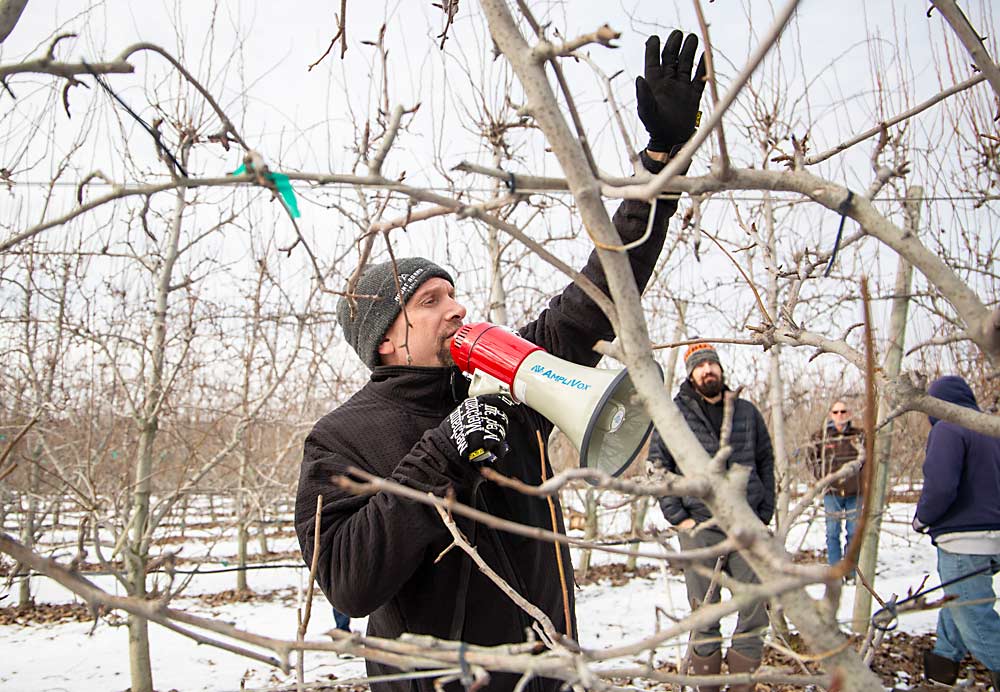
The trees in a 2017 planting of Anjous and Bartletts on a V-trellis are trained in a two-dimensional array resembling turkey tails. The Spanish-speaking crews call the system “pavo real,” translated as “peacock.”
“We have had really good luck” with the system, Pitz said.
The method is labor intensive early, costing upward of $1,500 per acre for hand pruning and training in years 2, 3 and 4, as crews train branches at 35- to 45-degree angles along the plane, Pitz said. They prune minimally, leaving the branches “hairy” with 15 or more growing points to absorb the young trees’ vigor. This also encourages a crop by Year 4. The only permanent branch is the center leader.
With 5- by 13-foot spacing, the 2017 block produced 45 and 48 bins per acre, respectively, in 2021 and 2022. If not for a poor fruit set in 2023, they would have expected more, Pitz said.
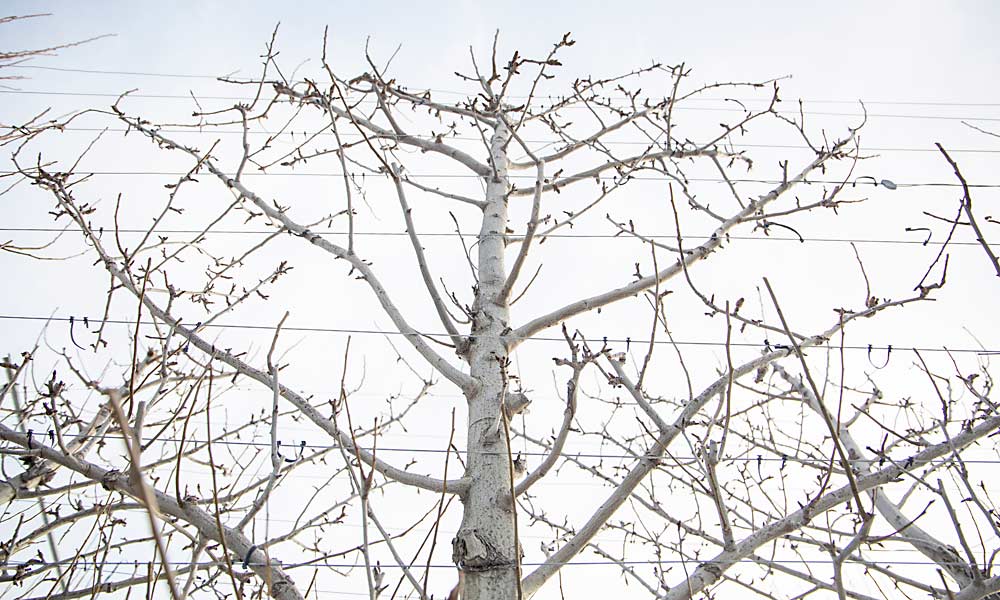
The trellis and irrigation systems cost about $8,500 for the labor and materials to install.
Another turkey tail V-trellis block of Anjou and Bartlett, planted in 2018, produced 23 bins per acre in 2022 with roughly the same early training and pruning costs but about $9,000 per acre for metal trellises and a dual irrigation system with both drip and microsprinkler emitters.
In that block, in addition to their normal winter pruning, crews prune inside branches during the summer to increase light penetration through the canopy.
The company is so fond of the turkey tail results that it planted another block in 2020, Pitz said. It was not on the tour.
The third pear stop on the tour was an organic three-leader block of Anjou, Bartlett and Bosc planted in 2013 at 6.5-by-13 spacing into a vertical trellis. Yields normally bounce between 40 and 50 bins per acre. The highest was 58 in 2021. In this example, labor for training and pruning cost up to $800 per acre per year in years 2, 3 and 4 but dropped to roughly $600 after that.
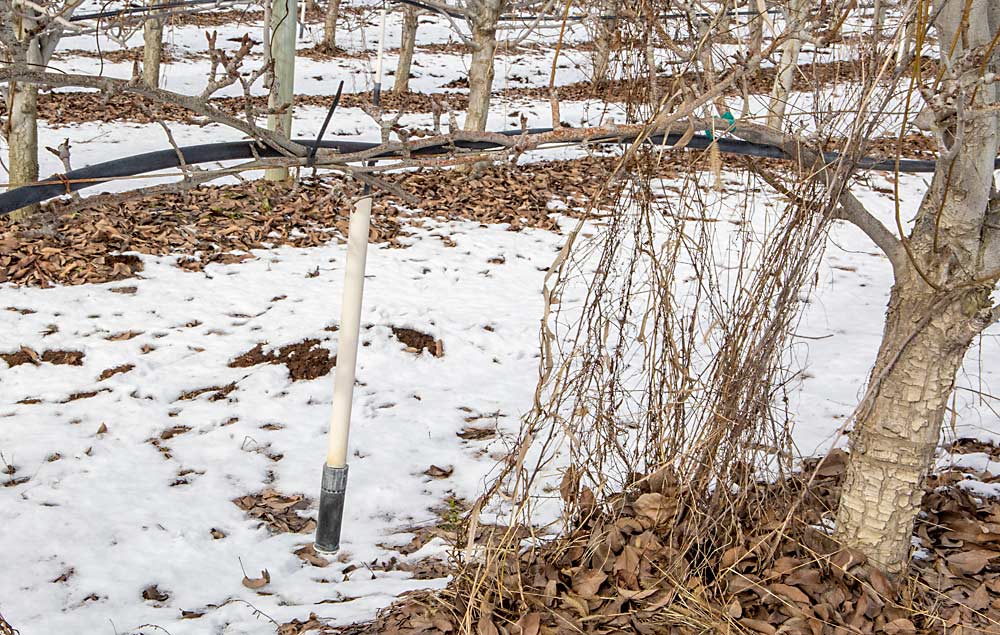
In that block, managers instruct pruning crews to keep 18-inch branches coming off the three leaders, trying to encourage fruit to grow on short, stiff 2-year-old or 3-year-old wood.
“It just seems to grow better quality,” Pitz told the crowd.
They also have been experimenting with click pruning Bartletts and Anjous, a renewal technique that involves cutting 1-year-old wood to 4 inches to encourage bud breaks behind the cuts.
The field day also covered soil health, which Mount Adams has recently begun to rethink as managers search for ways to control vigor and encourage quality fruit.
Crews have drastically reduced nitrogen applications and replaced dry applications with liquid fertilizer mixed with amendments such as calcium, humic acid and micronutrients via a rigged-speed sprayer, said Andy Dolph, the company’s agronomist and warehouse field representative.
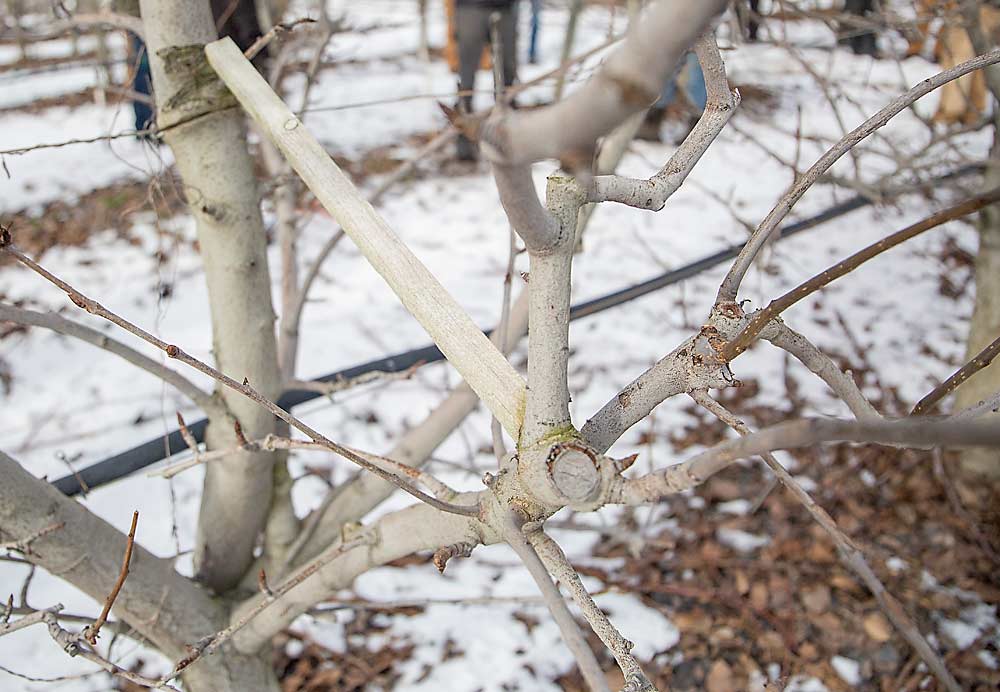
Today, they apply zero to 40 pounds of nitrogen per acre on average, down drastically from the 75 to 100 pounds per acre applied 15 to 20 years ago, Pitz said. They also use chicken manure in places, and not only in organic blocks.
The lower level of nitrogen also reduces their need for broad-spectrum insecticides and other sprays, Pitz said. Incidence of pear psylla and fire blight typically increase with the increased vigor from excess nitrogen.
With all these techniques, Pitz and others at Mount Adams believe they can get pear trees to average 70 bins per acre at full maturity.
“We’ve seen good success,” said Doug Gibson, CEO of Mount Adams, in a follow-up conversation. “We expect that to continue in the future.”
—by Ross Courtney

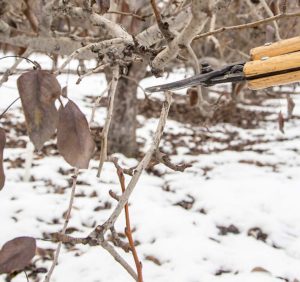





Leave A Comment